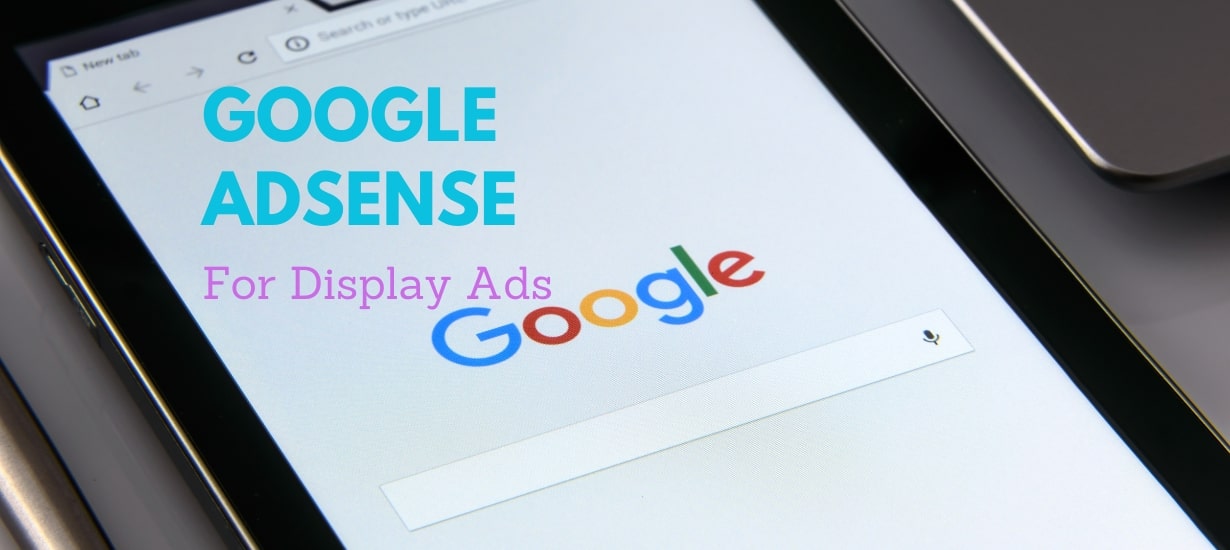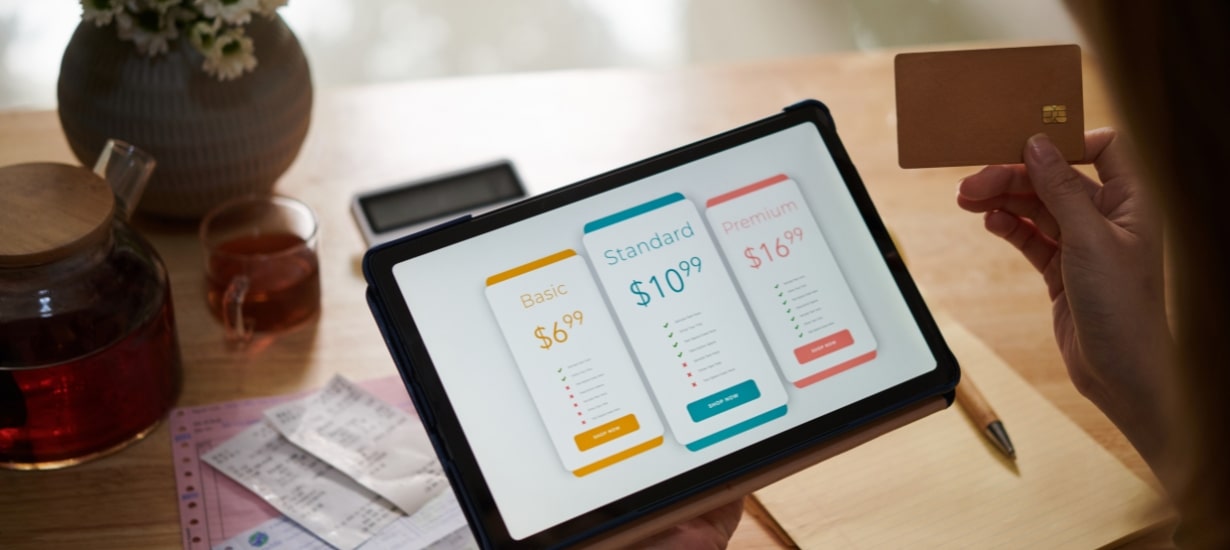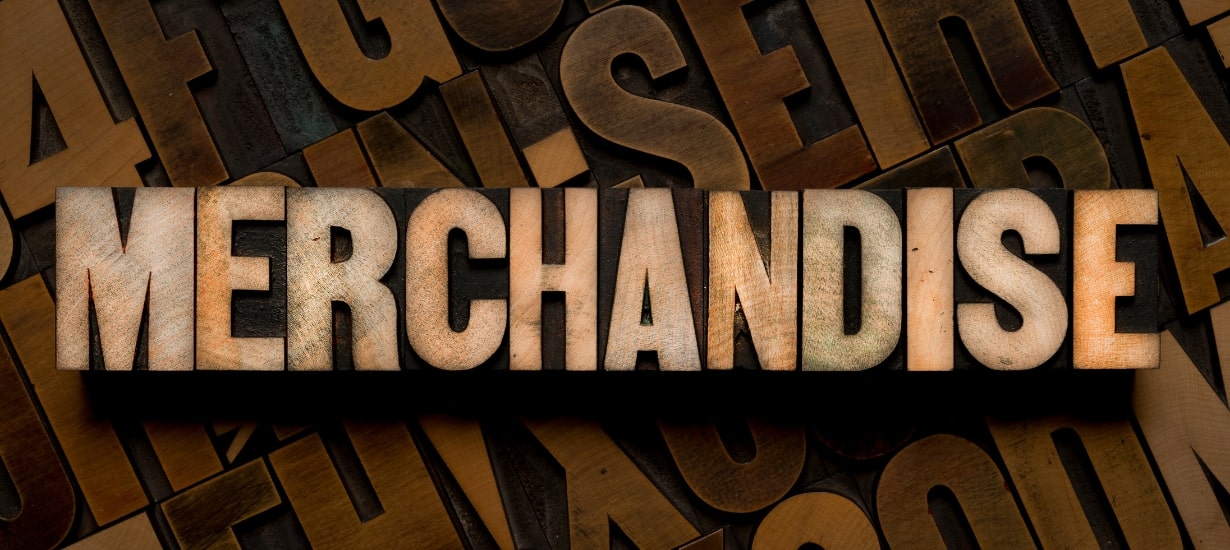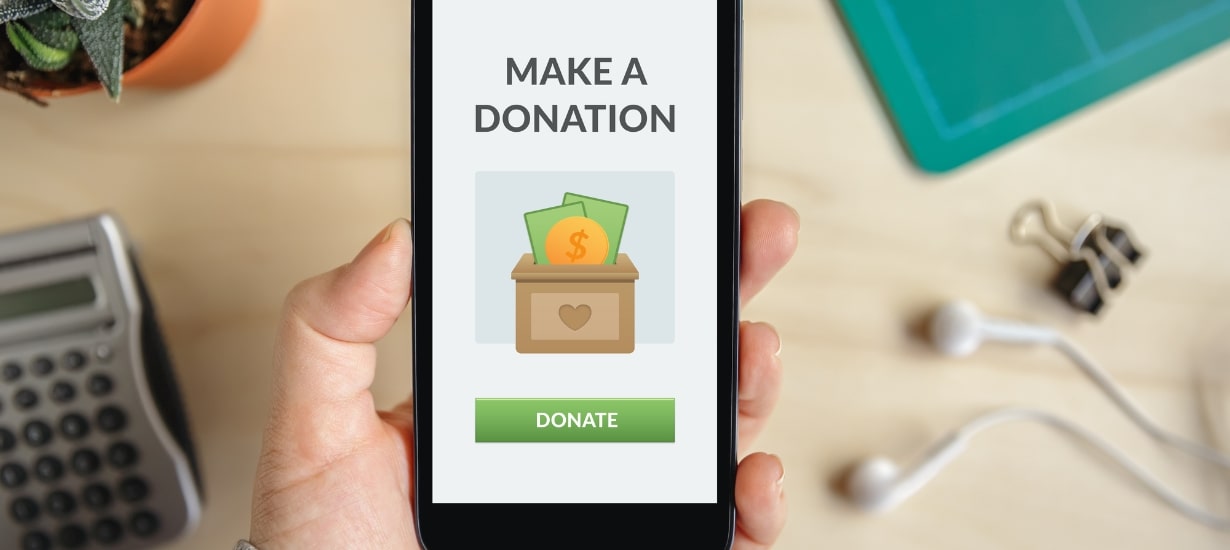Grab opportunities like ad placements and affiliate marketing to maximize your blog's potential.
Not monetizing your blog means missing out on extra income and the chance to transform your passion into a success.
Blogging always takes effort and time if writing is your passion. Most smart writers always convert their slightest effort into assets and funnel them into money.
To monetize a blog, display ads and affiliate marketing generate revenue from traffic and sales. Expand income streams by offering digital products, subscriptions, or membership sites for exclusive content. Collaborate with brands for sponsored posts and consider selling physical products through an online store.
In this blog post, we'll explore monetizing your blog through affiliate marketing and sponsored posts, providing tips on finding opportunities and creating valuable content.
How to Monetize a Blog: 11 Ways

When making money from your blog, using different methods is smart. To multiply your income sources, check out other blogging income sources.
Affiliate Marketing: A Simple Way to Earn
Affiliate marketing is a popular way to make money from your blog. Commissions can be earned by promoting products from other companies. Let’s explore how you can get started with affiliate marketing.
What is Affiliate Marketing?
It is the practice of promoting other people's products on your blog. You earn a commission when your readers buy the product through your link.
- Promote Products: Share links to products you love.
- Earn Commissions: Get a percentage of each sale made through your link.
Finding the Right Products
Promoting the right products is essential to successful affiliate marketing. Pick products that match your blog’s theme and interest your readers.
- Know Your Audience: Understand what your readers like.
- Choose Quality Products: Only promote items you trust and believe in.
How to Join Affiliate Programs
To start affiliate marketing, you need to join affiliate programs. These programs provide you with unique links to share.
- Research Programs: Look for programs that fit your niche.
- Sign Up: Apply to join and get your unique affiliate link.
Tips for Success
To make the most out of affiliate marketing, keep these tips in mind:
- Be Honest: Always disclose your affiliate relationships.
- Create Valuable Content: Write helpful posts that naturally include your affiliate links.
Sponsored Posts
Blogging can be more than just a hobby; it can also be a way to earn money. One great method is through sponsored posts. In this section, we'll explore what sponsored posts are and how they can help you make money.
What Are Sponsored Posts?
You create sponsored posts for a brand or company. The brand pays you to write about their product or service.
- You share your honest opinion.
- You include information about the brand.
- You get paid for your work.
How to Get Sponsored Post Opportunities?
Finding opportunities for sponsored posts can be exciting. Here are some tips to help you get started:
- Build Your Blog: Make sure your blog looks professional and has good content.
- Grow Your Audience: More readers mean more brands will be interested.
- Reach Out to Brands: Contact companies you like and ask if they want to work together.
- Join Blogger Networks: These networks connect bloggers with brands looking for sponsored posts.
How to Write a Sponsored Post?
Writing a sponsored post is a bit different from regular blogging. Keep these points in mind:
- Be Honest: Share your true thoughts about the product.
- Follow Guidelines: Brands may have specific things they want you to include.
- Stay Authentic: Make sure your writing still sounds like you.
Benefits of Sponsored Posts
Sponsored posts can be a great addition to your blog. Here’s why:
- Earn Money: You get paid for your writing.
- Build Relationships: Working with brands can lead to more opportunities.
- Enhance Your Blog: Sponsored content can offer new and exciting material for your readers.
Google AdSense for Display Ads

Monetizing a blog can be a great way to earn money online. One of the most popular methods is through ad networks. These services allow you to earn money by displaying ads on your blog. Here’s how you can start.
Understanding Ad Networks
Ad networks connect bloggers with advertisers. They act as intermediaries, helping you display ads that are relevant to your content.
- Google AdSense: One of the most widely used ad networks.
- Easy Setup: Ad networks often provide simple tools to integrate ads on your blog.
- Revenue Sharing: You earn a portion of the revenue from ads shown on your site.
Setting Up Google AdSense
Google AdSense is a favorite among bloggers for its ease and reliability. Here’s a simple guide to getting started.
- Sign Up: Register with the Google AdSense website.
- Ad Placement: Choose where ads will appear on your blog.
- Customize Ads: Select ad types and sizes that fit your blog’s design.
- Track Earnings: Use AdSense reports to monitor your income and performance.
Maximizing Ad Revenue
You should optimize your ad placements and content to make the most money.
- High-Traffic Areas: Place ads in areas with the most views, like the top of pages.
- Responsive Ads: Use ads that adjust to different device screens.
- Quality Content: Create engaging content to attract more visitors.
Selling Digital Products
Digital products can range from e-books to courses to printables. They are great because you create them once and sell them repeatedly without worrying about inventory or shipping. Let's explore some options for digital products you can sell on your blog.
E-books
The digital version of a book is available on computers or e-readers. They are an excellent way to share your expertise or tell a story.
- Choose a Topic: Pick a topic that appeals to your readers and aligns with your blog's theme.
- Write and Edit: Create compelling content and ensure it’s error-free with thorough editing.
- Design a Cover: A professional-looking cover can attract more buyers.
- Promote: Use the blog and social media to let readers know about your e-book.
Courses
Online courses allow you to teach your audience about a specific subject, providing a learning experience that’s more interactive than an e-book.
- Identify Skills to Share: Think about what skills or knowledge you have that others might want to learn.
- Create Course Material: Develop lessons, videos, and quizzes to engage your students.
- Choose a Platform: Host your course on a platform that supports video, text, and discussion.
- Market Your Course: Highlight the benefits of your course and share testimonials from past students.
Printables
Printables are digital files your customers can print themselves. They include planners, worksheets, art prints, and more.
- Design Useful Items: Make sure your printables are practical and visually appealing.
- Use Design Tools: Tools like Canva can help you create professional-looking products.
- Offer in Various Formats: Provide files in formats like PDF or JPG to suit different needs.
- Bundle Products: Consider selling bundles of printables for better value.
Membership or Subscription Models

By monetizing your blog, you can turn your passion into income. One effective method is using membership or subscription models. This approach involves offering exclusive content to your readers for a monthly fee. Here's how you can implement this strategy.
Understanding Membership Models
Membership or subscription models are a way to give your readers special access to content. They can enjoy unique articles, videos, or other materials that aren’t available to the public by paying a monthly fee.
- Exclusive Content: Offer articles, videos, or podcasts that only subscribers can see.
- Special Features: Give members access to a private forum or group.
- Early Access: Allow members to see your content before anyone else.
Setting Up Your Membership Program
Creating a membership program requires planning to ensure it appeals to your audience. Here’s how to get started:
- Choose a Platform: Use services like Patreon or Memberful to manage subscriptions.
- Define Your Offer: Decide what exclusive content you will provide.
- Set a Price: Consider what your audience is willing to pay monthly.
Promoting Your Membership
Once your membership program is ready, you must inform your audience about it. Promoting your membership effectively can help you gain more subscribers.
- Highlight Benefits: Clearly explain what members will get.
- Use Social Media: Share posts and updates about your exclusive content.
- Offer Trials: Provide a free trial period to attract new members.
Engaging with Subscribers
Keeping your members engaged is crucial for retention. Happy members are more likely to continue their subscriptions and recommend your blog to others.
- Regular Updates: Post new content consistently to keep members interested.
- Feedback Channels: Allow members to give feedback or suggestions.
- Community Building: Encourage subscribers to interact with each other.
Offer Writing, Design or Consulting
Offering freelance services through your blog is a great way to earn money. You can use your blog to show off what you can do and find clients who need your help.
Why Offer Freelance Services?
- Showcase Your Skills: Use your blog to display your work and skills in writing, design, or consulting.
- Reach a Wide Audience: Blogs can reach people all over the world, giving you more chances to find clients.
- Build Your Brand: As you offer services, you build a name for yourself and your blog.
Types of Freelance Services
- Writing: Offer to write articles, stories, or content for other websites.
- Design: Create logos, graphics, or website designs for clients.
- Consulting: Contribute your expertise to help others improve their businesses or projects.
How to Get Started
- Create a Portfolio: Show examples of your work on your blog to attract clients.
- Set Clear Rates: Be upfront about how much you charge for different services.
- Promote Your Services: Use social media and networking to let people know about your services.
Selling Physical Products
Offering physical products that resonate with your blog’s theme can be a profitable venture. Here’s how you can begin:
Identify Your Niche
Before you start creating products, it’s important to understand your blog’s niche and what your audience is interested in. You can then select products that will appeal to them.
- Research your audience: Conduct surveys or engage in direct conversations.
- Analyze popular posts: Check which topics get the most engagement.
Create Relevant Merchandise

Once you have a clear understanding of your audience, you can start designing products that align with their interests.
- Custom T-shirts or apparel: Use catchy phrases or designs related to your blog.
- Branded accessories: Think about items like mugs, hats, or tote bags.
- Stationery and planners: Perfect for lifestyle or organization blogs.
Set Up an Online Store
To sell your products, you’ll need an online storefront. There are several platforms that can help you do this easily.
- E-commerce platforms: Use sites like Shopify or Etsy.
- Integrate with your blog: Add a shop section where readers can browse and buy.
Market Your Products
Marketing is key to selling your products successfully. Use your blog and social media channels to spread the word.
- Write blog posts: Share stories about your products and how they fit your niche.
- Social media promotion: Post regularly about your products on Instagram or Facebook.
- Email newsletters: Send updates and special offers to your subscribers.
Webinars: Share Your Knowledge
Webinars are online seminars where you can teach or share your expertise with others. They are a great way to connect with your audience and offer valuable information.
- Choose a Topic: Pick something you are passionate about and that your audience wants to learn.
- Set a Date and Time: Make sure it suits most of your audience.
- Promote Your Webinar: Make use of social media and your blog to spread the word.
- Charge a Fee: Decide on a fair price for your webinar. You can offer early bird discounts to get more sign-ups.
Workshops: Hands-On Learning
Workshops are more interactive than webinars. They allow participants to learn by doing, which can be very effective.
- Plan Your Content: Structure your workshop so participants can follow along easily.
- Engage with Participants: Encourage questions and discussions to keep everyone involved.
- Provide Materials: Share worksheets or resources that attendees can use during and after the session.
- Collect Feedback: Ask for feedback to improve future workshops.
Promoting Your Events
Promoting your webinars and workshops is key to their success. Here’s how you can get the word out:
- Email Marketing: Send emails to your subscribers with details about your events.
- Social Media Posts: Create posts on different platforms to reach a wider audience.
- Blog Announcements: Write a blog post about your upcoming event.
Podcast Sponsorships

If you have a blog and are looking to make some money, adding a podcast is a great option. Podcasts are audio shows that you can listen to online. They are becoming very popular, and many bloggers use them to earn extra income.
Why Consider Podcast Sponsorships?
Podcast sponsorships are when companies pay you to talk about their products on your podcast. Here’s why podcast sponsorships are a great way to monetize your blog:
- Growing Audience: Podcasts can reach people who prefer listening to reading.
- Build Trust: Listeners often trust podcast hosts, making them more likely to try recommended products.
- Diverse Income: It's another way to earn money besides ads and products on your blog.
How to Get Podcast Sponsorships
To get sponsors for your podcast, you need to follow some steps. Here’s how you can start:
- Create Quality Content: Make interesting and engaging podcast episodes.
- Grow Your Audience: Promote your podcast on social media and your blog.
- Contact Potential Sponsors: Look for companies that fit your podcast theme and reach out to them.
Tips for Successful Sponsorships
Working with sponsors takes some planning. Here are a few tips to make your sponsorships successful:
- Be Honest: Only promote products you believe in.
- Understand Your Audience: Know what your listeners like and need.
- Keep It Natural: Mention products in a way that fits naturally into your podcast
Online Courses
By creating and offering courses, you can easily make money from your blog. By sharing your expertise, you can help others learn valuable skills while generating income. Here’s how you can get started.
Understand Your Audience
Before you create a course, it’s important to know who your audience is. You will be able to design a course that appeals to them.
- Conduct surveys to gather insights.
- Analyze your blog’s most popular posts.
- Use social media and comments to engage your audience.
Choose a Topic
Select a topic that is both interesting to your audience and something you are knowledgeable about. This will help ensure the course is valuable.
- Review your most-read blog topics.
- Consider what questions your readers frequently ask.
- Think about the skills you have mastered.
Develop Course Content
Break down your topic into manageable sections. This makes it easier for your audience to learn and understand.
- Create an outline of your course.
- Develop engaging lessons with clear goals.
- Include visuals like videos or infographics to aid understanding.
Set Up Your Course Platform
Decide where you will host your course. There are many online platforms that can help you manage and sell your course.
- Explore platforms like Teachable or Udemy.
- Consider using your blog to host the course if possible.
- Ensure the platform is user-friendly for both you and your students.
Promote Your Course
Once your course is ready, you need to let people know about it. Use various methods to reach your audience.
- Announce the course on your blog.
- Share on social media platforms.
- Send newsletters to your subscribers.
Donations and Crowdfunding

Monetizing a blog can be both rewarding and challenging. One effective way to earn money is through donations and crowdfunding. This method allows your readers to support your work directly. Here’s how you can encourage reader support through platforms like Patreon.
Why Choose Donations and Crowdfunding?
Before diving into the how-to, it's essential to understand why donations and crowdfunding can be beneficial for your blog:
- Direct Support: Readers can directly fund your work, helping you to continue creating content.
- Community Building: It fosters loyalty and community among your audience.
- Flexibility: You can offer different levels of support, tailoring your offerings to a variety of reader needs.
Setting Up a Platform
Choosing the right platform is crucial. Here's a simple guide to get you started:
- Research Platforms: Look into popular platforms like Patreon, Ko-fi, and Buy Me a Coffee.
- Compare Features: Consider fees, ease of use, and what each platform offers.
- Create an Account: Sign up and set up your profile, ensuring it reflects your blog's brand.
Engaging Your Audience
Once you've set up your platform, engaging your audience is key to successful monetization:
- Communicate Clearly: Let your readers know how their support helps you.
- Offer Exclusive Content: Provide special content, like behind-the-scenes posts or early access, to those who donate.
- Set Goals: Share your milestones or funding goals to motivate readers to contribute.
Promoting Your Crowdfunding Efforts
Finally, promote your donations and crowdfunding efforts effectively:
- Use Social Media: Share updates and special content on platforms like Twitter, Facebook, and Instagram.
- Include Calls to Action: Add clear calls to action in your blog posts and newsletters.
- Thank Your Supporters: Show appreciation to those who contribute, which can encourage ongoing support.
How to Maximize Blog Revenue

Running a blog can be rewarding, but making money from it takes some smart strategies. Here are three ways to help you earn more from your blog.
Diversify Income Streams
It is risky to depend solely on one source of income. It's better to have multiple ways to earn money.
- Offer Products or Services: Create your own products like e-books or courses.
- Join Affiliate Programs: Promote products that you believe in and earn commissions.
- Use Sponsored Content: Work with companies to write posts about their products.
Optimize Ad Placements
Ads can bring in money, but where you place them makes a big difference.
- Use Eye-Catching Spots: Put ads where people naturally look, like the header or sidebar.
- Test Different Formats: Try different sizes and types of ads to see what works best.
- Focus on Quality Over Quantity: Too many ads can annoy readers, so choose high-paying ones.
Update and Test Affiliate Links
Affiliate links can earn you money, but they need regular attention to perform well.
- Check Links Regularly: Make sure they work and lead to the right product.
- Use Trackable Links: See which links get the most clicks and sales.
- Promote High-Performing Products: Focus on promoting items that convert well.
Choose a Profitable Blog Niche
Selecting the right niche is one of the most important steps in monetizing your blog. A niche is a specific topic or area that your blog will focus on. Choosing a profitable niche can significantly impact how much money you can make from your blog.
Why Niche Selection Matters
Picking the right niche is like choosing the perfect plot for a garden. In the blogging world, your niche determines the type of audience you attract and the kind of content you create. Here's why it matters:
- Attracts Targeted Audience: A specific niche helps you reach the people who are most interested in your content.
- Builds Authority: Focusing on a niche allows you to become an expert in that area, making it easier to gain your audience's trust.
- Increases Monetization Opportunities: Advertisers and sponsors often look for blogs with a clear focus to target their products or services effectively.
Tips for Choosing a Profitable Niche
Finding a profitable niche is crucial for maximizing your blog's earning potential. Here are some suggestions to help you choose the right one:
- Identify Your Interests: Start by listing topics you are passionate about. Blogging is more enjoyable and sustainable when you write about what you love.
- Research Market Demand: Use tools like Google Trends to see if people are searching for what you want to write about. High demand can mean more traffic to your blog.
- Check Out the Competition: Look at other blogs in the niche. If there are many successful blogs, it means there is a market, but you'll need to find a way to stand out.
- Consider Monetization Options: Think about how you can make money in that niche. Can you sell products, offer services, or join affiliate programs?
- Evaluate Long-term Potential: Choose a niche that will stay relevant over time. Trends come and go, but a solid niche can keep providing value for years.
Increase Traffic To Monetize Your Blog

Boosting traffic is essential for monetizing your blog effectively. More visitors mean more opportunities to generate income. Here’s how to increase your blog traffic using different strategies.
Improve Organic Search Traffic with SEO
Search Engine Optimization (SEO) helps your blog appear higher in search results. When people search online, they are more likely to click on links that show up first.
- Use Keywords Wisely: Include words that people might use to find your blog. Place them in titles, headers, and throughout your content.
- Optimize Images: Add descriptions to your images so that search engines can understand them.
- Create Quality Content: Write posts that are interesting and useful. Quality content keeps people coming back.
Draw Readers with Social Media
The power of social media lies in its ability to attract blog readers. It helps you connect with your audience and share your content widely.
- Choose the Right Platforms: Focus on social media sites where your audience spends most of their time.
- Engage with Followers: Answer questions and comments to create a community.
- Share Regularly: Post updates about your blog content consistently to keep your audience engaged.
Work with other bloggers
Your blog can benefit from working with other bloggers to reach a wider audience. Collaborations are mutually beneficial and can introduce your blog to new readers.
- Guest Posts: Write articles for other blogs and invite bloggers to write for yours.
- Joint Events or Webinars: Host online events together to attract followers from both audiences.
- Cross-Promotions: Share each other’s content to expand your reach.
Create a Media Kit
To earn money from your blog, you need to show advertisers why they should work with you. One way to do this is by creating a media kit. Let's dive into what a media kit is, what it should include, and why it's important.
What is a Media Kit?
Media kits are like resumes for bloggers. It tells potential advertisers everything they need to know about you and your blog.
- Blog Overview: Describe what your blog is about.
- Audience Information: Share details about who visits your blog, like age and interests.
- Traffic Statistics: Include numbers like page views and unique visitors.
- Social Media Stats: Show your followers count across different platforms.
Components of a Media Kit
A good media kit has several key parts. Each part helps convince advertisers that your blog is worth investing in.
- About You: A short bio about who you are and why you blog.
- Contact Information: Make it easy for advertisers to reach you.
- Advertising Options: List the types of ads you offer, like banners or sponsored posts.
- Testimonials: Include quotes from past advertisers if possible.
Benefits of a Professional Media Kit
Having a professional media kit makes your blog look serious and ready for business. Here are some benefits:
- Attracts Advertisers: Shows you are prepared and professional.
- Saves Time: Gives advertisers all the information they need quickly.
- Builds Trust: A professional look makes advertisers more likely to trust you.
Focus on Content Quality

To successfully monetize your blog, it's crucial to focus on delivering high-quality content. Readers are drawn to blogs that provide value, engage their interest, and offer unique insights. This section will guide you on why quality content is important and how to maintain high standards.
Importance of Valuable and Engaging Content
The foundation of a successful blog is the creation of valuable content. Here's why it's important:
- Attracts Readers: Quality content draws more visitors to your blog, increasing your audience.
- Builds Trust: When you provide useful information, readers trust your expertise and are more likely to return.
- Encourages Sharing: Engaging content is more likely to be shared on social media, making your website more visible.
- Improves SEO: Search engines favor well-written, informative content, helping you rank higher.
Techniques for Maintaining High Content Standards
Keeping your content standards high is essential for long-term success. Here are some techniques to help you maintain quality:
- Research Thoroughly: Always back your posts with facts and data. Use reliable sources to ensure accuracy.
- Engage Your Audience: Write in a way that speaks directly to your readers. Use simple language and ask questions to keep them involved.
- Edit and Proofread: Always check for grammar and spelling errors. Editing helps you refine your message and improve clarity.
- Update Regularly: Update old posts with new information and insights.
Use Email Marketing
The power of email marketing can help you make money from your blog. It allows you to connect with your readers and turn them into loyal customers. By sending the right messages to the right people, you can increase your earnings and grow your blog's success.
The Role of Email Marketing in Monetization
Email marketing helps you build a direct line to your audience. Unlike social media, where your posts might get lost in the noise, emails go straight to a person's inbox. This means your message is more likely to be seen and read. Email marketing can boost your blog's income by promoting products, sharing deals, or driving traffic to your site.
Tips on Building and Nurturing an Email List
To succeed with email marketing, you need a strong email list. Here are some ideas to help you build and maintain it:
- Create a Sign-up Form: Make it easy for your readers to sign up with a sign-up form on your blog. Use eye-catching designs and clear call-to-action buttons to encourage sign-ups.
- Offer Value: Give your readers a reason to subscribe. Offer them something valuable, like a free guide, special offer, or discount in exchange for their contact information.
- Send Regular Updates: Keep your subscribers interested by sending regular emails. Share new blog posts, updates, or special offers to keep them engaged.
- Personalized Emails: Use their names and tailor the content to their interests. This makes your emails feel more personal and can increase the chances of conversions.
- Analyze and Improve: Pay attention to how your emails perform. Check your open and clickthrough rates, as well as conversion rates, to see what's working. Use this information to improve future emails.
How to Make Your Blog More Profitable

Turning your blog into a money-making machine can be an exciting journey. By making a few smart changes, you can attract more advertisers and generate extra income. Let's explore some strategies to enhance your blog's monetization potential.
Website Design Improvements to Attract Advertisers
A well-designed blog is like a magnet for advertisers. Here’s how you can make your blog more appealing:
- Clean Layout: Keep your design simple and organized. A clutter-free look helps visitors focus on your content and attracts advertisers who value clarity.
- Fast Loading Speed: Ensure your blog loads quickly. Slow sites can push visitors away, and advertisers prefer fast, responsive pages.
- Mobile-Friendly Design: Make sure your blog looks great on phones and tablets. More people browse on mobile devices, and advertisers want to reach these audiences.
- High-Quality Images: Use clear and attractive images. Good visuals keep readers interested and show advertisers that you care about quality.
- Visible Ad Spaces: Plan for ad placements that are noticeable but not intrusive. Advertisers like spots that catch the eye without annoying visitors.
Collaborations and Partnerships
Working with others can help your blog grow and make more money. Here are ways to build valuable partnerships:
- Guest Blogging: Invite other bloggers to write on your site. This brings in new readers and can lead to shared advertising deals.
- Affiliate Programs: Join affiliate programs to earn commissions. Promote products you believe in and earn money when your readers make purchases.
- Content Sponsorship: Promote brands with sponsored content. Become a product or service writer and earn money.
- Social Media Collaborations: Partner with influencers or brands on social media. By doing so, you will be able to attract more advertisers and reach a wider audience.
- Networking Events: Attend blogging and networking events. Meeting others in the industry can open doors to new collaborations and monetization opportunities.
Conclusion
As we wrap up this journey into the world of blog monetization, remember that the possibilities for turning your passion into profit are vast and varied. From embracing affiliate marketing and crafting sponsored posts to venturing into the realm of digital products, each strategy holds the promise of financial growth and sustainability.
When you diversify your income streams, optimize your content, and continuously explore new opportunities, your blog can become a robust revenue-generating platform.
FAQs
The amount of money earned from 1,000 blog views varies greatly based on factors like ad networks, audience engagement, and niche.
Generally, bloggers might earn anywhere from $1 to $10 per 1,000 views, but this depends on advertising rates and monetization strategies. Some niches with higher-value audiences could potentially earn more.

